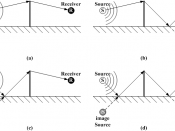How Communication Flows
"It is useful to think of communication as a process of sending and receiving messages with attached meanings." (Schermerhorn, Hunt and Osborn, 2005, P295)
"Messages are transmitted through various communication channels, such as face-to-face meetings, e-mail and online discussions, written letters of memoranda, and telephone communications or voice mail, among others." (Schermerhorn, Hunt and Osborn, 2005, P295)
This student's workplace use e-mail communication mostly. E-mail is used between customers and us, between vendors and us, and, of course, between employees.
We used to share one general e-mail address for information posting, but, under new management since April of 2006, CEO instructed us not to use that e-mail address for general information posting. He restricted the flow of communication.
This student does not know how this restricted flow of communication affects employees.
We also use MSN Messenger as well as e-mail. This is a helpful communication tool when we would like to get quick replies.
There are three directions of communication flow, downward, upward, and laterally. (Schermerhorn, Hunt and Osborn, 2005, P298)
E-mail and MSN Messenger are frequently used for lateral communication at our workplace.
Since downward communication and upward communication are for in-between different levels, these are done with additional documentations such as presentation sheets or reporting tools.
Conversation is the most powerful tool of communication. Because this method is usually face-to-face communication, we are able to see and to feel the true message and emotion from facial expression, tone of voice.
Organizational Diversity
Since this student's workplace is a subsidiary of Japanese corporation, most of employees are Japanese or Japanese American. There are five males and three females.
Therefore, this organization may not be a good example of racial diversity.
Clients are also Japanese corporation.
When employees' cultural backgrounds are all the same or similar,


